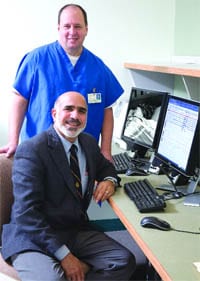Guns Pose Critical Public-health Issue
Deaths and injuries from firearms continue to shine a spotlight on gun violence as a public-health issue. The latest mass shootings in South Carolina and Tennessee join a list that includes tragedies in Newtown, Conn., at Virginia Tech, and in the Colorado communities of Columbine and Aurora. These shocking incidents receive great attention because of the numbers of people killed and injured, the young ages of the shooters, and where they take place (schools, a church, a movie theater).
Yet, they are far from the only acts involving firearms. Since the 2012 shooting at Sandy Hook Elementary School in Newtown, 127 additional school shootings have occurred in the U.S. as of July 1, 73 of them in grades K-12, according to Everytown for Gun Safety, which tracks such data.
Physicians have become increasingly concerned about this growing incidence of violence from firearms. In April, seven physician organizations joined with the American Public Health Assoc. and the American Bar Assoc. to issue a call to action, saying that deaths and injuries related to firearms constitute a major public-health problem in the U.S.
This is not a new position for physicians. As far back as 1985, then-U.S. Surgeon General C. Everett Koop, who served in that post from 1982 to 1989, called attention to violence as a major public-health concern and worked to engage the medical profession in contributing to the prevention of violence. In 1989, the American Medical Assoc. labeled firearm deaths and injuries a critical public-health concern.
The rising number of shootings, however, has brought a new urgency to gun violence as a public-health issue. Each year, more than 32,000 people in the U.S. die as a result of firearm-related violence, suicides, and accidents. And according to the U.S. Centers for Disease Control (CDC), that number is expected to increase, to the point where, this year, for the first time, deaths from firearms will surpass deaths from motor-vehicle accidents nationally.
Physicians are particularly concerned about the risks to children, as firearm violence is among the leading causes of death for teenagers and young adults. CDC statistics show that more than 2,600 children and teens up to 19 years old die from gun violence in an average year. Additional research indicates that, on average, 20 children and adolescents are hospitalized each day due to firearm injuries.
Firearms in the home pose a major threat to the life and well-being of children. A child’s curiosity is boundless, and on many occasions, a child has found a loaded gun in the home and played with it, with tragic consequences.
For those homes with guns, safety is critically important. Public-health studies have consistently shown that keeping a gun in the home significantly raises the risk of homicide, suicide, and unintentional injury. Suicide in the U.S. is twice as prevalent as homicide, and we know from research that suicide rates are higher in states that have more homes with guns.
Physicians want to make sure that individuals who have guns are aware of the dangers of having unsecured weapons in their homes. The dangers are especially high if children are present, if individuals are despondent or depressed, or if the potential for domestic violence exists. These are the instances that can turn into tragedy; these are the situations that raise the likelihood the weapon will be an instrument of homicide, suicide, or unintentional injury or death. There is no unsecured weapon that is not a threat to the family that lives in the home.
The safest home for a child is one without a gun, and if there is a gun in the home, children are safer if it is kept locked and unloaded with the ammunition locked separately. Those steps alone would save so many lives of children and adolescents.
For information on violence and suicide prevention and gun safety, visit the CDC at www.cdc.gov/
Dr. Michael Hirsh is surgeon-in-chief at UMass Memorial Children’s Medical Center, medical director of the Worcester Public Health Department, and founder of Worcester’s Goods for Guns Program. Dr. Robert Sege is vice president of the Medical Foundation Division of Health Resources in Action and a member of the American Academy of Pediatrics Committee on Child Abuse and Neglect. This article is a public service of the Mass. Medical Society.




Comments are closed.